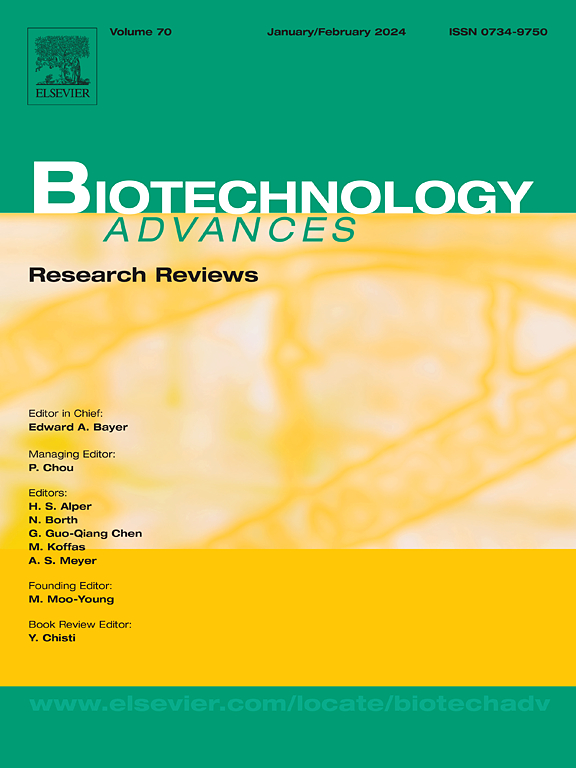Split technology in sensors based on CRISPR/Cas12a system
IF 12.5
1区 工程技术
Q1 BIOTECHNOLOGY & APPLIED MICROBIOLOGY
引用次数: 0
Abstract
CRISPR/Cas12a system has become a popular tool for nucleic acid analysis in recent years due to its high specificity, sensitivity and programmability. Recently, split technology has been applied to the CRISPR/Cas12a system for activators, crRNA, reporter and Cas12a. As a result, dsDNA without PAM, short ssDNA less than 15 nucleotides, and RNA can be directly detected, which are beyond the target scope of the canonical CRISPR/Cas12a system. Label-free reporter with lower cost can be incorporated into sensors based on the CRISPR/Cas12a system. Logic circuits with multiple inputs and outputs can be constructed in cells. Therefore, split technology can expand the target scope, enhance crRNA stability, increase strategy programmability, and reduce detection cost for the CRISPR/Cas12a system. In this review, we focus on the advancements of split technology in sensors based on the CRISPR/Cas12a system. We also summarize the advantages brought by split technology and discuss the challenges and perspectives of sensors based on the CRISPR/Cas12a system.
基于CRISPR/Cas12a系统的传感器拆分技术
近年来,CRISPR/Cas12a系统因其高特异性、敏感性和可编程性而成为一种流行的核酸分析工具。近年来,CRISPR/Cas12a激活子、crRNA、报告子和Cas12a的分裂技术被应用到CRISPR/Cas12a系统中。因此,可以直接检测不含PAM的dsDNA、小于15个核苷酸的短ssDNA和RNA,这些都超出了标准CRISPR/Cas12a系统的目标范围。基于CRISPR/Cas12a系统的无标签报告器可集成到传感器中,成本较低。具有多个输入和输出的逻辑电路可以在单元中构造。因此,拆分技术可以扩大CRISPR/Cas12a系统的靶标范围,增强crRNA的稳定性,增加策略可编程性,降低检测成本。在这篇综述中,我们重点介绍了基于CRISPR/Cas12a系统的传感器拆分技术的进展。我们还总结了分裂技术带来的优势,并讨论了基于CRISPR/Cas12a系统的传感器面临的挑战和前景。
本文章由计算机程序翻译,如有差异,请以英文原文为准。
求助全文
约1分钟内获得全文
求助全文
来源期刊

Biotechnology advances
工程技术-生物工程与应用微生物
CiteScore
25.50
自引率
2.50%
发文量
167
审稿时长
37 days
期刊介绍:
Biotechnology Advances is a comprehensive review journal that covers all aspects of the multidisciplinary field of biotechnology. The journal focuses on biotechnology principles and their applications in various industries, agriculture, medicine, environmental concerns, and regulatory issues. It publishes authoritative articles that highlight current developments and future trends in the field of biotechnology. The journal invites submissions of manuscripts that are relevant and appropriate. It targets a wide audience, including scientists, engineers, students, instructors, researchers, practitioners, managers, governments, and other stakeholders in the field. Additionally, special issues are published based on selected presentations from recent relevant conferences in collaboration with the organizations hosting those conferences.
 求助内容:
求助内容: 应助结果提醒方式:
应助结果提醒方式:


